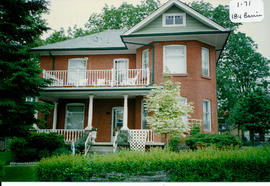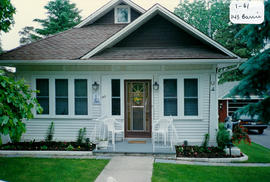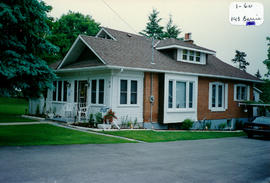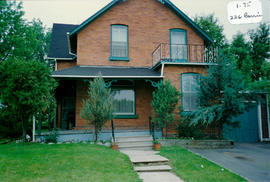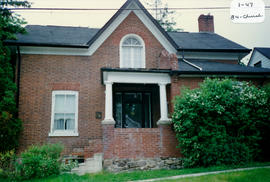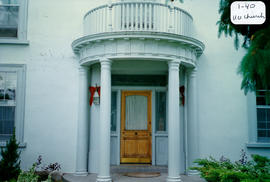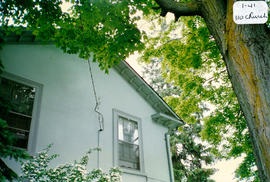184 Barrie Street - The Thorpe House
- CA BWGPL GJ-HB-2017-03-15-06
- Unidad documental simple
- 1996
Parte deGeorge Jackson fonds
The Thorpe House is located mid-block on the west side at 184 Barrie Street. It was built post-1900 in the Eclectic Edwardian style. Miss St. Clair lived in this house many years ago.
The two-storey, ‘L’-shaped building has a projecting, two-storey, angled bay with a wide, pediment-like gable. More Edwardian features include the classically-inspired entrance porch with a balcony above. The balcony is supported on slender Doric colonnettes set on brick piers. This porch appears to be a replacement. There are large windows and the principal windows have rectangular transom lights decorated with small squares of coloured glass. The gable window also has coloured glass inserts. A broad, hip roof, roof curb and wide eaves overhang are Italianate features. The house has brick masonry construction and a stone foundation. According to the 2000 inventory, metal siding conceals the original wood trim at the gable and soffit. It also notes that although the replacement porch columns, balcony railing, and the altered porch roof are not of the same proportions as the original design, the original character of the building is still maintained. (1, 3)
Sin título

